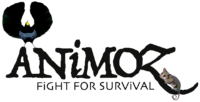The Short-beaked echidna (Tachyglossus aculeatus) is ACU – a Carn species found across Australia.
- ACU are typically between 30 and 45 centimetres long, including their beak
- They have tongues up to 15 centimetres long to allow them to scoop up their prey.
- The largest Short-beaked echidnas are about seven kilograms, but they typically weigh two to five kilos.
- They are solitary throughout the year but may be seen in groups during the mating season. A train of males will follow a female for several days until she decides which one of them is worthy enough to father her puggles.
A spiny side
ACU’s trademark is its spines.
Made of keratin, the same as our hair and fingernails and a rhino’s horn, the spines can be up to 5 centimetres long. In colder climates like Tasmania, you might see a furry echidna!
They grow fur like other mammals, but it is usually hidden beneath their spines, except when they need the extra insulation for colder weather. Their fur and spines can vary in colour depending on their environment; they may be any colour from light blonde where they live by sand, to a deep chocolate brown in forested habitats. This is why ACU is an ANiMOZ Wildcard!
When threatened, ACU quickly burrows halfway into the ground, and rolls up into a ball, leaving only its spines exposed. A predator won’t be able to get to ACU’s soft belly without getting spiked, making this a very effective predator defence. This technique also helps ACU survive bushfires.
An all-round survivor, ACU is also a strong swimmer and very good at floating, allowing them to escape floodwaters!

What does the Short-beaked echidna eat?
ACU eats ants and termites (like REUS and UST) almost exclusively, but may supplement their diet with insect larvae and earthworms.
They use their long claws to break up the soil around an ant or termite nest, then use their long sticky tongue to scoop up the insects. Their genus name, Tachyglossus, means fast tongue!
In fact, ACU don’t even have teeth!
Instead, they have hard pads at the back of their beak, allowing them to squish their food rather than chew it. Their droppings are cylindrical and you can often see the carapaces of ants and termites within them.
ACU is a monotreme!
The short-beaked echidna is one of only two monotremes found in Australia, meaning that they are mammals, yet they lay eggs!
The babies are called puggles and hatch from the eggs after only ten days. They then crawl onto their mother’s belly, where she has a fold of skin that acts like a pouch. The puggles will stay in the skin fold pouch for up to 6 months, when they start to develop their adult spikes and become too prickly to carry!
Until the puggle is able to walk around and find its own food, the mother will leave it in a burrow and return to feed it in the evening. ACU don’t produce milk from teats like mammals, but secrete it from pores on the mother’s belly which the puggle laps up.
In zoos, when hand-raising ACU puggles, the keepers squirt some milk into their hands to replace the mother’s belly!
ACU doesn’t have many natural predators – their main threat is Habitat Destruction. As an ANiMOZ Ranger, you can help protect ACU in the wild by avoiding companies who destroy natural habitats, and through supporting organisations like the Echidna CSI project.
Have you seen an ACU in the wild? Share a photo on social media and tag @animozworld and #wildANiMOZ!

